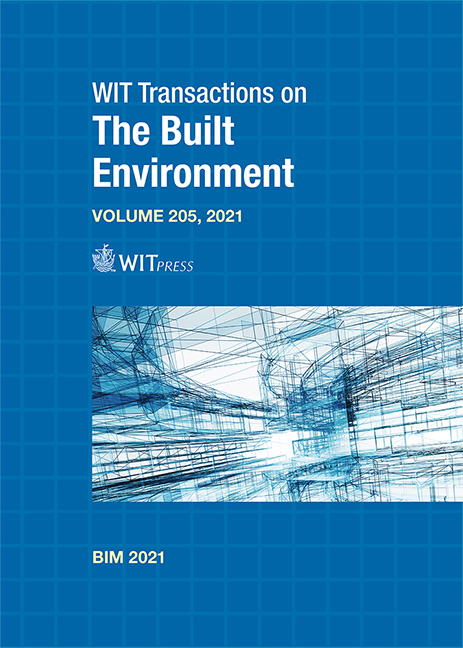OPPORTUNITIES AND CHALLENGES IN THE IMPLEMENTATION OF BUILDING INFORMATION MODELLING FOR PREFABRICATION OF HEATING, VENTILATION AND AIR CONDITIONING SYSTEMS IN SMALL AND MEDIUM-SIZED CONTRACTING COMPANIES IN GERMANY: A CASE STUDY
Price
Free (open access)
Transaction
Volume
205
Pages
10
Page Range
117 - 126
Published
2022
Paper DOI
10.2495/BIM210101
Copyright
Author(s)
NIJANTHAN MOHAN, ROLF GROSS, KARSTEN MENZEL, FABIAN THEIS
Abstract
Even though BIM (Building Information Modelling) is successfully implemented in most of the world, it is still in the early stages in Germany, since the stakeholders are sceptical of its reliability and efficiency. The purpose of this paper is to analyse the opportunities and obstacles to implementing BIM for prefabrication. Among all other advantages of BIM, prefabrication is chosen for this paper because it plays a vital role in creating an impact on the time and cost factors of a construction project. The project stakeholders and participants can explicitly observe the positive impact of prefabrication, which enables the breakthrough of the scepticism factor among the small-scale construction companies. The analysis consists of the development of a process workflow for implementing prefabrication in building construction followed by a practical approach, which was executed with two case studies. It was planned in such a way that, the first case study gives a first-hand experience for the workers at the site on the BIM model so that they can make much use of the created BIM model, which is a better representation compared to the traditional 2D plan. The main aim of the first case study is to create a belief in the implementation of BIM Models, which was succeeded by the execution of offshore prefabrication in the second case study. Based on the case studies, the time analysis was made and it is inferred that the implementation of BIM for prefabrication can reduce construction time, ensures minimal wastes, better accuracy, less problem-solving at the construction site. It was observed that this process requires more planning time, better communication between different disciplines, which was the major obstacle for successful implementation. This paper was carried out from the perspective of small and medium-sized mechanical contracting companies for the private building sector in Germany.
Keywords
building information modelling, HVAC, prefabrication, construction, small and medium scaled companies





